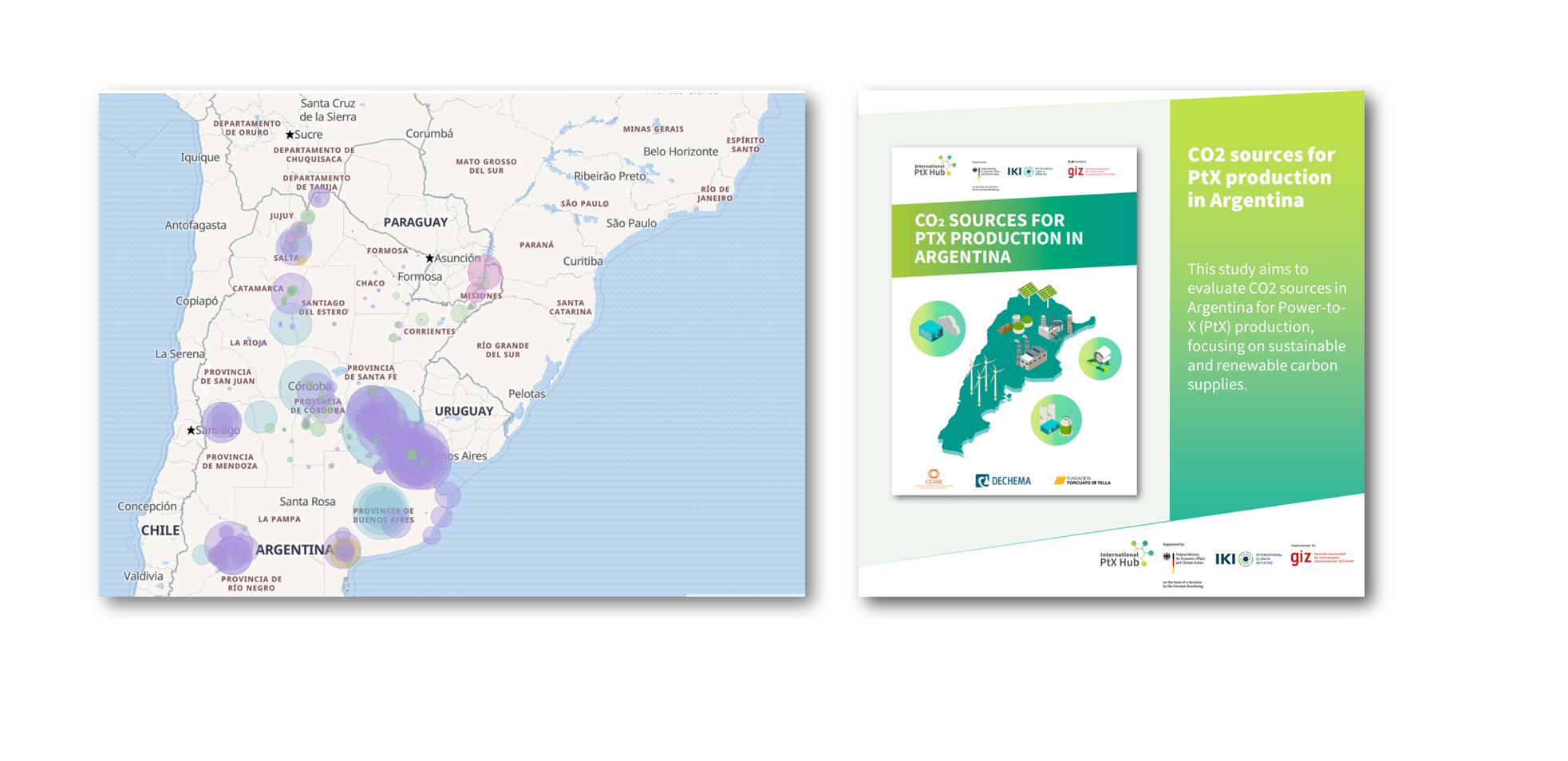Securing the future demand for Power-to-X (PtX) products such as methanol and synthetic fuels is a critical challenge, especially given Argentina’s ambitious renewable energy goals. Our latest study evaluates the potential CO2 sources across the country, focusing on sustainable and renewable carbon supplies. With Argentina’s favourable renewable energy conditions, particularly in the Patagonia region, the country is well-positioned for green hydrogen production.
In 2023, Argentina launched its National Low-Emission Hydrogen Strategy, setting targets of at least 1 Mt/year of low-emission hydrogen by 2030 and 5 Mt/year by 2050. Achieving these targets will require 30 GW of electrolysis and 55 GW of renewable electricity. Our study provides key insights into how these targets can be met by identifying and utilising CO2 sources effectively. The study identifies both industrial and biogenic CO2 sources, which are crucial for the production of PtX products. Capturing CO2 from current emissions and future technologies such as Direct Air Capture (DAC) is emphasised as a key strategy.
Regional potentials and challenges in Argentina include:
- Patagonian Region: High wind power potential with industrial CO2 sources like cement and aluminum plants. Limited local CO2 but strong export potential.
- Buenos Aires Province: Good wind power and CO2 from industrial plants, with Bahia Blanca as a potential PtX hub due to its petrochemical activities.
- Central Region: Available biogenic CO2 but less remarkable renewable energy potential, requiring further study.
- Northwest Region: Excellent solar conditions and multiple CO2 sources, but faces challenges such as water supply, social acceptance, and high logistics costs.
To complement the study, an interactive map of CO2 sources across Argentina was developed. This tool is compulsory to explore PtX opportunities, offering detailed insights into the CO2 landscape of the country. The map identifies key CO2 sources, distinguishing between industrial and biogenic emissions, and provides detailed information on the scale of emissions at each site.
Read the full study and explore the CO2 interactive map here:
Study: CO2 sources for PtX production in Argentina – PtX Hub (ptx-hub.org)
Interactive tool: Map of CO2 sources in Argentina – PtX Hub (ptx-hub.org)
